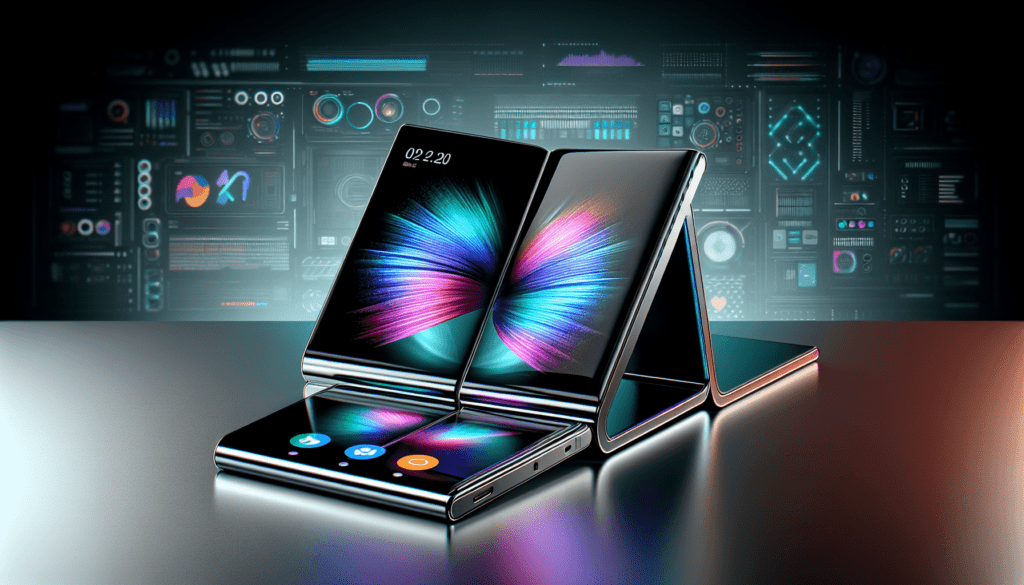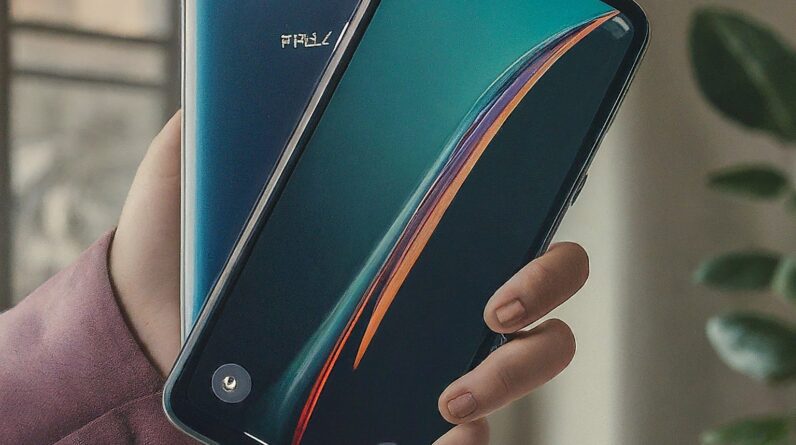Imagine a world where your smartphone seamlessly transforms from a compact device into a larger, tablet-like screen with just a simple fold. Sounds like something out of a sci-fi movie, right? Well, the future is here, and foldable smartphones are taking the tech world by storm. With advancements in technology, these innovative devices are set to revolutionize the way we interact with our phones. In this article, we will explore the latest trends and make some intriguing predictions about the future of foldable smartphones. Get ready to be amazed!
Introduction to Foldable Smartphones
Technology continues to advance at an unprecedented pace, and one of the latest innovations in the smartphone industry is the introduction of foldable smartphones. These devices, as the name suggests, have the unique ability to fold, allowing users to enjoy the benefits of a larger display while still maintaining portability. In this article, we will delve into the definition and history of foldable smartphones, explore the current state of this technology, discuss the challenges and roadblocks it faces, and make predictions about its future. Let’s begin our journey into the world of foldable smartphones!
Definition of Foldable Smartphones
Foldable smartphones, also known as foldable devices or foldables, are a new category of mobile devices that combine the functionality of smartphones with the versatility of flexible displays. Unlike traditional smartphones, which have a fixed form factor, foldable smartphones feature a foldable display that can expand or contract, depending on the user’s needs. This flexibility allows for increased screen real estate without sacrificing portability, making foldable smartphones a promising solution for those who desire larger screens but don’t want to carry around a tablet or laptop.
History of Foldable Smartphones
While foldable smartphones may feel like a recent development, the concept of flexible displays has been explored for many years. In fact, the first significant breakthrough in this area can be traced back to the mid-2000s when companies like Nokia showcased prototypes of devices with flexible displays. However, it wasn’t until 2019 that major smartphone manufacturers began releasing foldable smartphones, with Samsung unveiling the Galaxy Fold and Huawei introducing the Mate X. Since then, other players in the industry have joined the foldable smartphone market, signaling the growing interest and potential of this innovative technology.
Current State of Foldable Smartphones
Overview of Available Foldable Smartphone Models
As the demand for foldable smartphones continues to grow, smartphone manufacturers have responded by releasing an array of models to cater to different consumer preferences. Some notable models include the Samsung Galaxy Z Fold series, the Huawei Mate X series, the Motorola Razr, and the Microsoft Surface Duo. Each of these devices offers unique features and designs, showcasing the diversity within the foldable smartphone market. Moreover, with ongoing research and development in this field, we can expect even more models and variations to hit the market in the coming years.
Advantages and Disadvantages of Foldable Smartphones
Foldable smartphones offer several advantages over their traditional counterparts. The most obvious benefit is the ability to have a larger screen size when needed, allowing for a more immersive and enjoyable multimedia experience. Additionally, the foldable form factor enables multitasking with ease, as users can utilize different parts of the display for various applications simultaneously. Moreover, foldable smartphones offer the convenience of portability since they can be folded and easily fit into pockets or bags.
However, like any emerging technology, foldable smartphones also come with their own set of disadvantages. One of the primary concerns is the durability and longevity of foldable displays. The folding and unfolding mechanism puts strain on the display, which may lead to premature wear and tear or even screen failure. Furthermore, the current high price point of foldable smartphones makes them inaccessible to many consumers, hindering their adoption. As technology advances and manufacturing processes improve, it is expected that these issues will be addressed to a certain extent.

Technological Advancements
Flexible Display Technology
At the core of foldable smartphones is flexible display technology, which enables the devices to bend and fold without compromising visual quality. Foldable displays utilize materials like plastic or polymer, which are flexible and can withstand repeated folding and unfolding. The advancements in flexible display technology have played a pivotal role in making foldable smartphones a reality. Additionally, the development of ultra-thin glass for foldable displays has further enhanced the durability and overall user experience of these devices. As research in this field continues, we can anticipate even more significant advancements in flexible display technology.
Improvements in Hinge Mechanisms
The hinge mechanism is another critical component of foldable smartphones, as it allows the device to fold and unfold smoothly. In the early days of foldable smartphones, issues such as creasing, debris ingress, and durability concerns plagued the hinge design. However, smartphone manufacturers have been diligently working on improving the hinge mechanisms to provide a seamless folding experience. Through the use of advanced engineering techniques and materials, such as precision gears and carbon fiber composites, hinges have become more robust and reliable. These advancements have contributed to the overall usability and longevity of foldable smartphones.
Market Trends
Increasing Demand for Larger Screens
In recent years, there has been a growing demand for smartphones with larger screens. This trend can be attributed to various factors, such as the popularity of multimedia consumption, the rise of mobile gaming, and the need for enhanced productivity on mobile devices. Foldable smartphones offer a compelling solution to this demand, as they provide a larger screen size without sacrificing portability. With the increasing number of users relying on their smartphones for various tasks, the market for foldable smartphones is expected to expand rapidly in the coming years.
Competition Among Smartphone Manufacturers
As the potential of foldable smartphones becomes apparent, smartphone manufacturers are scrambling to secure their position in this emerging market. Companies like Samsung, Huawei, Motorola, and Microsoft have already made their foray into foldable smartphones, leveraging their brand recognition and manufacturing capabilities to offer innovative devices. The competition among these manufacturers is driving rapid advancements in technology, resulting in improved foldable smartphone models with each iteration. This healthy competition benefits consumers by providing more options and driving down prices, making foldable smartphones more accessible to a larger audience.

Use Cases of Foldable Smartphones
Multitasking and Productivity
One of the key advantages of foldable smartphones is their ability to enable multitasking and enhance productivity. The larger screen size allows users to have multiple applications open simultaneously, making it easier to switch between tasks and work more efficiently. For example, individuals can have a document open on one half of the screen while conducting video conferences on the other half. This enhanced multitasking capability makes foldable smartphones an attractive option for professionals who need to juggle multiple tasks on the go.
Enhanced Gaming Experience
Mobile gaming has seen tremendous growth in recent years, and foldable smartphones have the potential to take the gaming experience to the next level. The larger screen size and immersive display of foldable smartphones provide an enhanced gaming experience, allowing users to enjoy games with greater detail and immersion. Furthermore, certain foldable smartphone models offer specialized gaming features, such as high refresh rates and dedicated cooling systems, further enhancing the gaming performance. With the increasing popularity of mobile gaming, foldable smartphones have the potential to become the device of choice for gamers.
Challenges and Roadblocks
Durability and Longevity of Foldable Displays
One of the major challenges faced by foldable smartphones is ensuring the durability and longevity of the foldable displays. The constant folding and unfolding of the display puts immense strain on the delicate components, which can lead to issues such as creasing, cracking, or premature failure. Manufacturers are continuously working to develop more durable materials and improved designs to mitigate these concerns. Additionally, advancements in display technologies, such as the use of self-healing or flexible glass, may offer solutions to enhance the durability of foldable displays in the future.
Pricing and Affordability
Another hurdle for foldable smartphones to overcome is the current high price point, making them inaccessible to many consumers. Due to the complex engineering and manufacturing processes involved, the cost of foldable smartphones remains considerably higher than traditional smartphones. However, as technology evolves and economies of scale come into play, it is anticipated that the prices will gradually decrease, making foldable smartphones more affordable and accessible to a wider demographic.
Future Predictions
Integration with Other Emerging Technologies
The future of foldable smartphones appears to be closely intertwined with other emerging technologies. One possible integration is with augmented reality (AR) and virtual reality (VR). Combining foldable smartphones with AR/VR capabilities could offer users a truly immersive and interactive experience, enabling them to navigate virtual worlds with ease. Additionally, advancements in camera technology, such as under-display or periscope cameras, may further enhance the imaging capabilities of foldable smartphones, opening up new possibilities for photography and videography.
More Affordable and Accessible Foldable Smartphones
As with any new technology, the initial cost of foldable smartphones is relatively high. However, market trends indicate that prices will gradually decline as adoption increases and economies of scale come into effect. Furthermore, as manufacturers perfect their production processes and competition intensifies, we can expect to see more affordable and accessible foldable smartphones in the near future. This growing accessibility will drive widespread adoption and integration of foldable smartphones into everyday life.
Potential Impacts on Other Industries
Implications for App Developers
The rise of foldable smartphones brings about new considerations for app developers. To fully utilize the unique form factor and capabilities of foldable smartphones, developers need to optimize their applications to seamlessly transition between different screen sizes and orientations. This will require adaptation and innovation in the development process to ensure a consistent and immersive user experience across all types of devices. App developers who can successfully leverage the potential of foldable smartphones may gain a competitive edge in the market, thereby reshaping the landscape of mobile app development.
Effect on Tablet and Laptop Markets
Foldable smartphones have the potential to disrupt the tablet and laptop markets. With their larger screens and increased portability, foldable smartphones offer a compelling alternative to tablets for multimedia consumption, productivity, and gaming. Many users may find it more convenient to opt for a single device that combines the functionalities of both a smartphone and a tablet, thereby reducing the need to carry multiple devices. Similarly, for certain tasks that traditionally required a laptop, foldable smartphones with improved multitasking capabilities may provide a viable substitute. As a result, the tablet and laptop markets may experience a shift in consumer preferences as foldable smartphones gain popularity.
Consumer Adoption and User Experience
User Feedback and Satisfaction
User feedback and satisfaction play a crucial role in determining the success and future prospects of any new technology. As foldable smartphones are relatively new to the market, understanding user experiences and addressing their concerns is vital for long-term adoption. While initial feedback has been largely positive, highlighting the appeal of larger screens and enhanced functionality, it has also unveiled areas for improvement. User concerns regarding durability, software optimization, and usability will guide manufacturers in refining their products and addressing the pain points of consumers.
Factors Influencing Consumer Adoption
Several factors influence consumer adoption of foldable smartphones. The price-to-performance ratio is a significant consideration for consumers, as the cost of a foldable smartphone is often higher than that of a traditional smartphone. Additionally, the durability and longevity of foldable displays, as well as the availability of compatible applications, impact consumer confidence in adopting this technology. Furthermore, strong marketing campaigns and education about the benefits and unique features of foldable smartphones can influence consumer perception and drive adoption. It is essential for manufacturers to address these factors and create an ecosystem that fosters consumer trust and adoption.
Conclusion
In conclusion, foldable smartphones have emerged as an exciting and innovative category in the smartphone industry. With their ability to provide larger screens while maintaining portability, foldable smartphones offer numerous advantages for users seeking enhanced productivity, gaming experiences, and multimedia consumption. Despite the challenges surrounding durability, pricing, and consumer adoption, ongoing technological advancements and market trends indicate a promising future for foldable smartphones. As integration with other emerging technologies progresses and prices become more affordable, foldable smartphones are poised to reshape the way we interact with and perceive mobile devices. Whether it’s a seamless transition between work and play, immersive gaming experiences, or more efficient multitasking, foldable smartphones have the potential to transform the way we use and engage with technology. The future of foldable smartphones is incredibly exciting, and we can’t wait to see what lies ahead!





